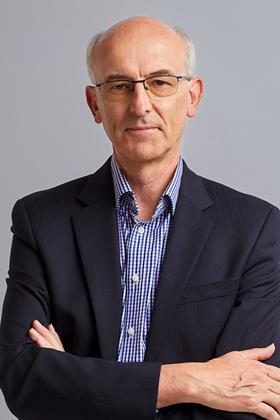When is it time to go ‘pedal to the metal’ to build growth, and when is it the moment to pull back and be more circumspect? David Davies speaks to a trio of vendors to find out how much these actions are influenced by global trends and events, and how to succeed in uncertain times.

Throughout 2023, a series of industry conferences and seminars featured sessions on how to deliver business growth – and no wonder. In a historical period that seems sure to be remembered for its profound uncertainty and ever-increasing risk factors, being able to devise meaningful longer-term strategies has to be more challenging than ever.
The geopolitical factors are simultaneously universal and acute; for example, whilst it had seemed in the second half of last year that supply chain issues were slowly being resolved, we are now immersed in an escalating crisis affecting shipping in the Red Sea. Then there are the technology changes, with AI set to transform countless areas of media in ways that can’t yet be fully envisaged. For vendors, in particular, this makes it difficult to embark upon R&D that doesn’t run a high risk of being swiftly eclipsed.
Watch more How Generative AI will Change the Entertainment Industry Forever
Nonetheless, a certain degree of speculative R&D has always been integral to media technology evolution, so how best to proceed? “In 2022, the Collins Dictionary declared that ‘permacrisis’ was the word of the year,” observed Erik Otto, CEO of broadcast compliance logging, monitoring and analysis company Mediaproxy.

“The current political and economic discussion essentially revolves around countries finding themselves in an [ongoing crisis] that is reasonably unprecedented. As a CFO or CEO you have to keep abreast of these economic and political developments, otherwise you have your head in the sand, which is not [tenable] – especially if your company is operating on a global level.”
‘The economic issues are more endemic’
Economists and political observers are split on how long the present global malaise has been taking shape, but plenty would side with Otto, who points to the global financial crash of 2008-11 as a likely inflection point. Historically, he said, “you could see repeating patterns that affected different parts of the economy, but I think it’s fair to say that the [issues surrounding] them have become far more endemic nowadays.”
Fifteen years on and it’s abundantly clear that multiple primary systems are failing in the world’s mature economies. “The countries where the policy was one of sticking to austerity [recovered much more slowly],” noted Otto, adding that those nations’ approaches to “economic management, growth and governance in general are not functioning as they used to.”
In short, the economic backdrop against which everyone must do business has become ever-harder to read. “A lot of economies are intertwined now, and even in our business there’s a lot of consolidation happening with some of the bigger companies merging more so they are able to compete globally.”
But if being apprised of market fluctuations is now more critical to working effectively on the global stage, it appears that some operating principles are more constant in nature. The fact that some companies “were caught out is in part a failure of some rudimentary business and financial planning, and the fact that a lot of people had got used to those repeating patterns.”
By contrast, prioritising a longer-term view that is based around core capabilities and the provision of sufficient capacity, come what may, has proven highly effective for Mediaproxy. “We’re an engineering-driven company, so we always make sure we’re in a position to seize opportunities to improve our technologies [regardless of] the economic situation at hand. Of course, if you are running a startup or a capital-funded company, it’s a lot different to a company like ours [which is privately-held], where we see our place as being one in which we have a responsibility to drive our technology forward as far as we can, for as long as we can.”
This seems especially crucial in an area of broadcast where workflows are continually evolving, with very specific implications for compliance and monitoring technology. “I did write the word ‘innovation’ down a number of times in advance of this interview,” laughed Otto. “You do have to keep investing in an industry that is driven by rapid technological advancements, so there wouldn’t be any compelling reasons to be austere. That really would be the absolute last option, I think.”
‘Focusing on features and functions’

Global events inevitably impact different businesses in contrasting ways – not least because of their own particular stage of development. In the case of IPTV and OTT software specialist MwareTV, the company found it had the right products at the right times as the pandemic unfolded, while its evolution of cloud-based solutions has continued to resonate in an increasingly decentralised world.
“The pandemic didn’t impact much on our development strategy,” confirmed COO Cees van Versendaal. “Existing customers got a very successful development of their customer subscriber base as everybody wanted to watch television. [Subsequent to Covid] we found that a lot of other companies wanted to deploy services, which meant we were able to win new contracts that we are developing now.” The upshot, he added, was that “we didn’t need to change anything in our long-term overall strategy”.
If achieving robust growth is partly about having solutions that chime with the market at any given time, then it follows that avoiding allocation of investment to areas of technology with uncertain futures is also an important factor. Van Versendaal said that MwareTV has been able to do precisely that by adopting a relatively circumspect attitude to at least two major recent content delivery trends: personalisation and FAST (Free Ad-Supported Television).
There was a period, he recalled, “where everybody was talking about personalisation, and you don’t hear that so much now – mainly because people learned that if you don’t have a large subscriber base and a lot of content, a personalisation engine doesn’t make much sense. And now you see a similar thing happening with FAST, which is a very interesting business from a broadcast perspective, but there are [questions for operators] about whether they can start a service without investing a lot of money.”
Instead, it appears that a pragmatic view that favours “adding new features and functions to improve the total performance”, as well as undertaking “low-level stuff to make OTT development more easy”, has proven to be a winning strategy for MwareTV. Similarly, the remote operational structure of the company that means it is not dependent on large amounts of real estate – “we are basically a virtual company” – has also helped the company to develop in a consistent way year-on-year, hence “the amount that we invest in our R&D doesn’t tend to fluctuate”.
‘Pushing against an open door’
For broadcast production equipment manufacturer Grass Valley, it was surely beneficial that the internal changes following its acquisition by Black Dragon Capital – which was completed in July 2020 – were done and dusted by the time the industry’s shift in emphasis from physical to virtual technology began to accelerate dramatically.

“Hardware still makes up a big point of our revenue, partly because hardware by definition involves CapEx purchases like cameras and switches,” pointed out CTO Ian Fletcher. But at the same time, “there has been a big shift in the amount of stuff and workflows that can be run on COTS [commercial-off-the-shelf] as opposed to dedicated hardware. If you look at what happened in the audio industry, people still want outboard gear but the majority of the audio processing and so on is now done in software on [standard computers]. Now you also see the same transition in video.”
Grass Valley has presumably been greatly aided by having a robust virtual ecosystem – GV Media Universe – and Agile Media Processing Platform (AMPP) in place as the bedrock of its development for a long time now. “There has been quite a rapid transition in the industry to more software services, which is where we see a lot of the growth happening in the business with the AMPP product line.”
The shift to virtualisation was also something Black Dragon fully recognised and wanted to support. “We were very much pushing against an open door [with the owners]; they saw it as the future of the business. [Beyond that] the structural and ownership changes were really done by the time we got into the present very, very intense cycle of technical changes,” said Fletcher, adding that Grass Valley has also reduced its office space as more employers have embraced remote working.
While there is no doubt that it’s helpful to not have to navigate profound business and technology changes simultaneously, it’s also apparent that a pragmatic approach to development has served all three of our featured vendors well. An unwavering commitment to R&D has always been one of broadcast technology’s most admirable characteristics, and that shows no signs of changing any time soon – even if a little more spare capacity may have to be factored in as the global permacrisis era persists.
Read more Beyond DAI: How Dynamic Ad Insertion is optimising revenue and viewer engagement
























No comments yet